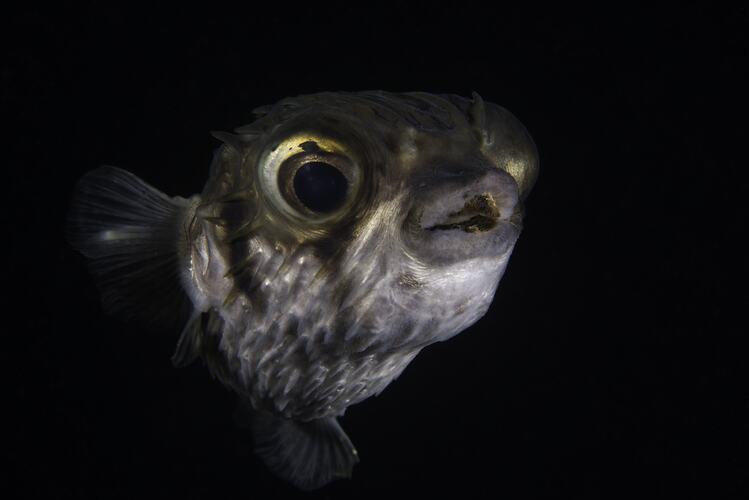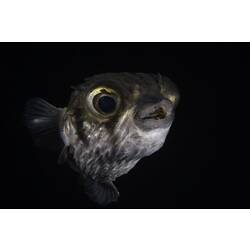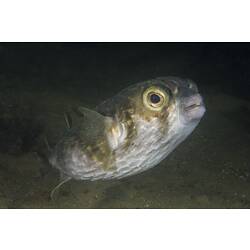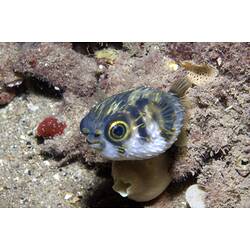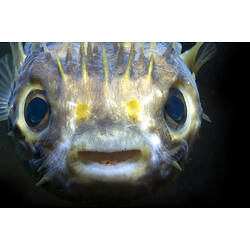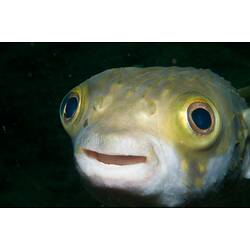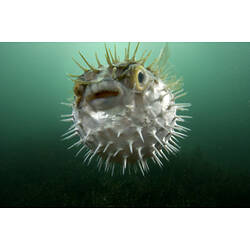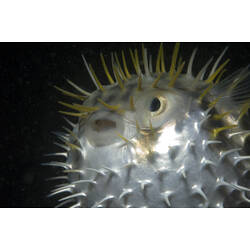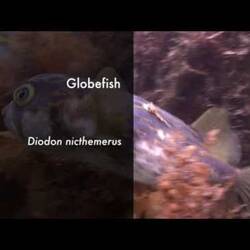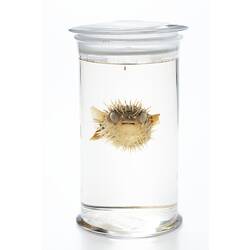General Description
Body robust, globe-shaped, covered in long, slender erectile spines, many equal to, or longer than the eye diameter, belly extremely inflatable, dorsal and anal fins small and placed far back on the body near the tail; teeth fused into a 'beak'. Greenish to brownish above, white below, with four dark bars on each side. Usually 15 cm long head to tail tip (up to 28 cm).
Biology
The formidable spines of the Globefish usually lie flat against the skin as it feeds and moves about. When threatened, the fish rapidly inflates itself by swallowing air or water into its stomach, erecting its spines and increasing its size to protect itself from predators. Although Globefish usually live near the bottom, they may form small groups around rocky reefs, jetty pylons and in the water column.
Distribution
Southern Australia.
Habitat
Estuarine seagrass beds, or shallow algal reefs and jetties.
More Information
-
Animal Type
-
Animal SubType
-
Brief Id
Body oval, covered with long spines, mouth small, large circular eyes, greenish-brown above, silvery-white below.
-
Habitats
-
Diet
Carnivore
-
Diet Categories
Invertebrates
-
Endemicity
-
Commercial
No
-
Conservation Statuses
CITES: Not listed, FFG Threatened List: Not listed, EPBC Act 1999: Not listed, IUCN Red List: Not listed
-
Depths
Deep ( > 30 m)
-
Water Column Locations
On or near seafloor
-
Taxon Name
-
Scientific Author
Cuvier, 1818
-
Common Name
Globefish
-
Kingdom
-
Phylum
-
Subphylum
-
Superclass
-
Class
-
Order
-
Family
-
Genus
-
Species Name
nicthemerus
